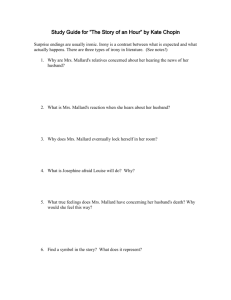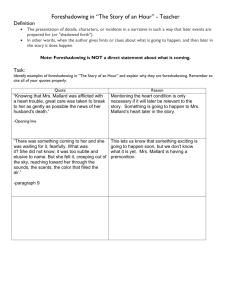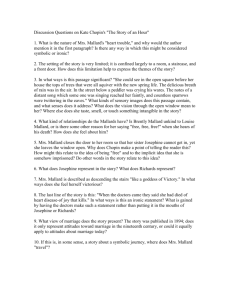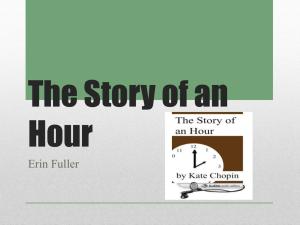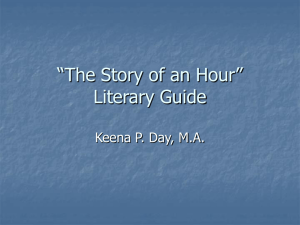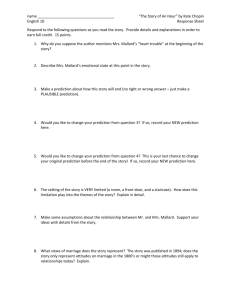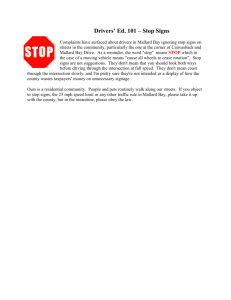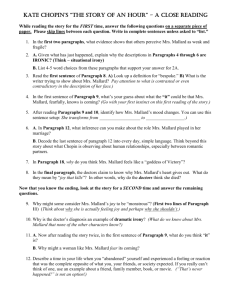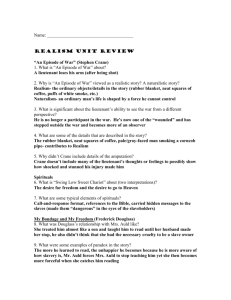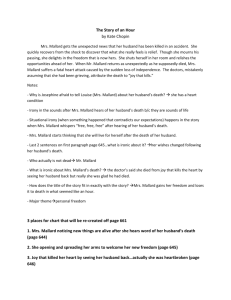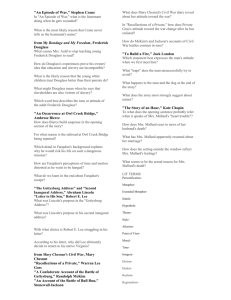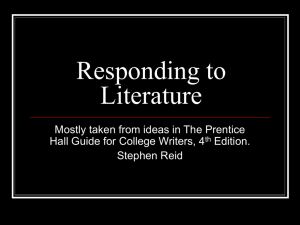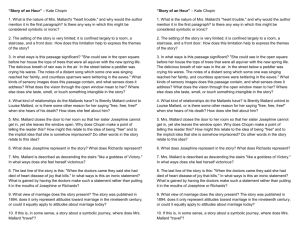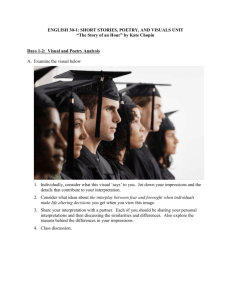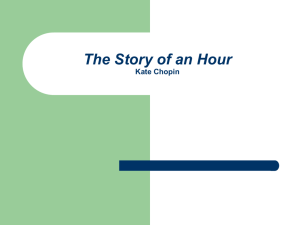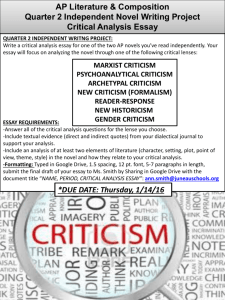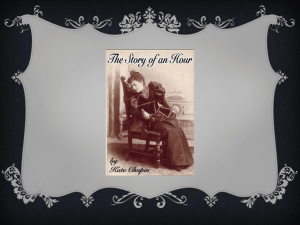Name - Hansen12345
advertisement
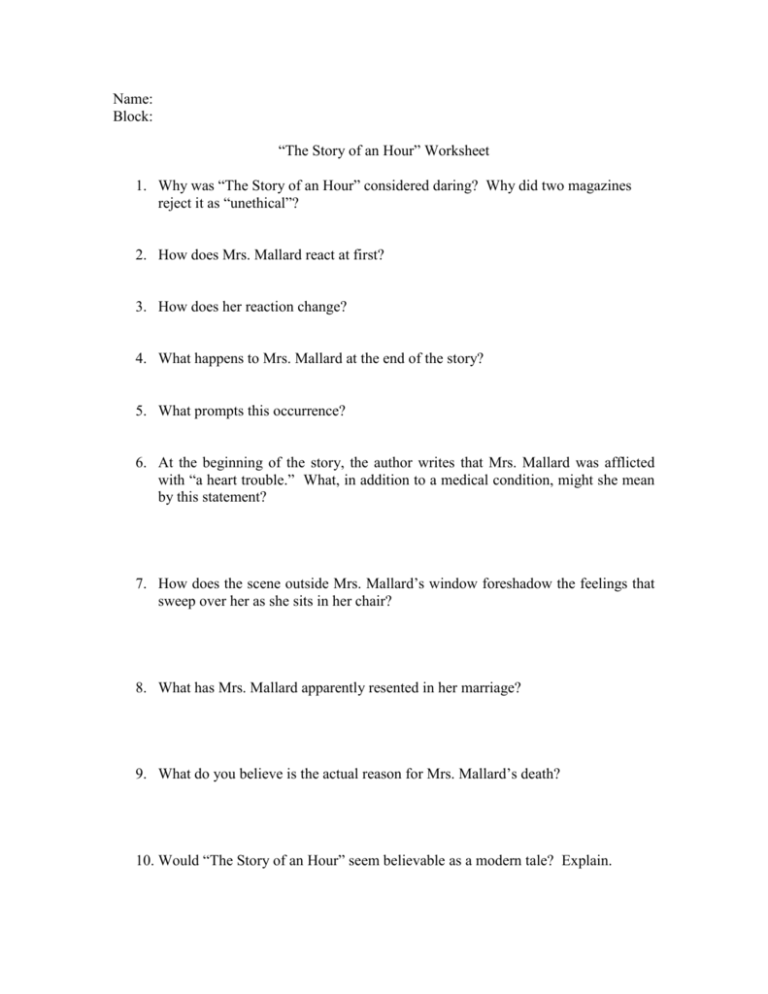
Name: Block: “The Story of an Hour” Worksheet 1. Why was “The Story of an Hour” considered daring? Why did two magazines reject it as “unethical”? 2. How does Mrs. Mallard react at first? 3. How does her reaction change? 4. What happens to Mrs. Mallard at the end of the story? 5. What prompts this occurrence? 6. At the beginning of the story, the author writes that Mrs. Mallard was afflicted with “a heart trouble.” What, in addition to a medical condition, might she mean by this statement? 7. How does the scene outside Mrs. Mallard’s window foreshadow the feelings that sweep over her as she sits in her chair? 8. What has Mrs. Mallard apparently resented in her marriage? 9. What do you believe is the actual reason for Mrs. Mallard’s death? 10. Would “The Story of an Hour” seem believable as a modern tale? Explain. Elements of Literature QUESTIONS 11. Define static character. Define dynamic character. Is Mrs. Mallard a static character or a dynamic character? Support with two examples from the text. 12. Define irony. Define verbal irony. Define situational irony. Define dramatic irony. Which two types of irony apply to “The Story of an Hour”? Explain why. 13. Define foreshadowing. Find five textual examples of foreshadowing. 14. Define Naturalism. The characteristics of Naturalism are a) Fate ruled by chance; b) Fate ruled by heredity and c) Fate ruled by environment. “The Story of an Hour” is an example of Naturalism. List two textual examples from “The Story of an Hour” for each characteristic. CHANCE HEREDITY ENVIRONMENT
